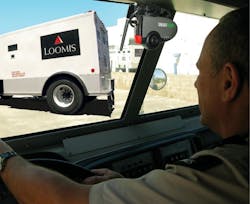Trucking telematics: It’s not just about Big Data anymore
Skip Kinford, president and CEO of MiX Americas, a division of MiX Telematics, believes that in order for the trucking industry to avoid being overwhelmed by the “Big Data” flows being delivered by their telematics systems, motor carriers instead need to create more bite-sized and focused “actionable intelligence” streams.
“Data is really supposed to do two things,” he explained to Fleet Owner. “One is to create ‘predictive models’ based on historical information to help identify future trends. The second is ‘exception reporting,’ whereby data is used to highlight opportunities for improvements.”
He also believes more technology “integration” is necessary as well so data can help foster further efficiency improvements via the “Hawthorne effect,” which postulates that individuals “modify or improve” behaviors in response to their awareness of being observed.
“When things get measured, not only can improvements be made but they can be sustained as well,” Kinford argued.
“Fleet managers now expect to find deeper, more actionable intelligence from all of the data created from their fleet management systems so they can improve efficiencies, lower costs and increase driver and vehicle safety,” he pointed out. “Pulling data easily from multiple sources, analyzing the data for actionable takeaways, and being able to create customizable reports, graphs and dashboards to share will become more in demand from fleet managers.”
That also means various safety technologies – but especially in-cab video systems, which Kinford believes will “become the norm” – must deliver value-added benefits on multiple fronts.
For example, in the case of in-cab video, fleets will seek an “integrated full featured telematics solution” not only to assist in accident investigations and claims but also to help train their drivers thus improve driving behaviors as well.
For this to work well, having the in-cab video integrated into the telematics system is the key, Kinford stressed. “As video becomes more of the norm for fleets, it will be a must-have tool to protect drivers and fleets during accident investigations and improve safety for everyone as well,” he emphasized.
Yet that need for more “focused” data – to harvest small and easily digestible pieces of information from the “Big Data” field – may require fleets, logistics companies and other freight providers to rethink how they manage information in the first place, argued Michael Lierow, a partner at global consulting firm Oliver Wyman, in a recent conference call hosted by Stifel Capital Markets.
“You need to talk about digital capability and what needs to be in place to make sure that you can harvest either on the efficiency side or on the growth side,” he explained.
“You talk about intelligent algorithms. You talk about machine learning. You talk about all those kinds of fancy things, and there’s a whole industry growing around those right now,” Lierow pointed out.
“But the things that are often forgotten are the other three elements. There’s the technology element,” he stressed. You need to connect the underlying IT [information technology]. You need to make sure that some of the data that is disbursed and that is not clean and that is not looked at for years, actually has a decent quality. And you need to look at innovation; innovation in terms of how do you organize the development of all this kind of new stuff in your organization.”
Lierow doesn’t believe many companies can be successful in this new “digital environment” when they remain in their “classical line” structures, trying to drive innovation and product development like they’ve done in the past.
“Why? Because it’s not agile enough [and] because it doesn’t respond fast enough to what happens out there … and because you just don’t have the capability of looking in the same speed left and right and all the different elements that are happening there, so that needs a new DNA that needs a new kind of organization and works in very, very agile teams.”
That’s one reason why MiX’s Kinford believes that the service backing up telematics offerings now and down the road – rather than the capabilities of the telematics technology itself – will deliver the greatest advantages for trucking fleets.
“The fact is, as product features across equipment providers become commoditized, what’s really going to make the difference is the type of service that providers can offer to fleets,” he explained.
“For instance, most fleets only utilize approximately 50% of their telematics system, when they can be getting so much more out of their investment,” Kinford said. “Telematics systems providers need to continue to show fleets how to get the most out of their systems – whether it’s for safety, fuel economy or compliance – ideally all three.” To his mind, the days of just “selling the system and walking away” are really over. “We need to continually show fleets how to get the most out of their system and extend ROI [return on investment] opportunities. That’s why I like to say ‘Big Data is dead’ because it’s the analysis of information, the ‘thin-slicing’ of it for specific insights, that will be most critical.”
About the Author
Sean Kilcarr
Editor in Chief
Sean Kilcarr is a former longtime FleetOwner senior editor who wrote for the publication from 2000 to 2018. He served as editor-in-chief from 2017 to 2018.

